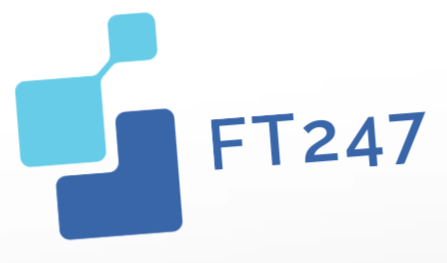The Basics of Mobile App Development with Flutter
Mobile app development has witnessed significant changes over the past few years, with various frameworks emerging to simplify and streamline the process. One of the most popular frameworks currently is Flutter, developed by Google. This report aims to provide a comprehensive overview of mobile app development using Flutter, covering its architecture, benefits, and financial implications, as well as industry trends and user engagement metrics.
Understanding Flutter
Flutter is an open-source UI software development kit (SDK) created by Google. It allows developers to build natively compiled applications for mobile, web, and desktop from a single codebase. Flutter employs the Dart programming language, which is optimized for building user interfaces. This framework stands out for its high performance, expressive UI, and rapid development capabilities.
Key Features of Flutter
1. **Single Codebase**: Flutter allows developers to write one codebase that runs on both iOS and Android platforms, reducing development time and costs.
2. **Hot Reload**: This feature enables developers to see changes in real-time without losing the current application state. This accelerates the debugging process and enhances productivity.
3. **Rich Widgets**: Flutter comes with an extensive library of pre-designed widgets that comply with Material Design and Cupertino styles, enabling highly customizable user interfaces.
4. **High Performance**: Flutter compiles to native ARM code, providing smooth animations and fast performance comparable to native applications.
The Mobile App Development Process with Flutter
Developing a mobile app with Flutter typically involves several key stages, from planning to deployment.
1. Planning and Research
Before diving into development, it is crucial to outline the app’s goals, target audience, and market demand. Researching competitors and user expectations can offer insights into necessary features and functionalities.
2. Designing the User Interface
Flutter allows designers and developers to collaborate effectively. Utilizing Flutter’s widgets, developers can create a visually appealing UI that aligns with user preferences. Tools like Adobe XD or Figma can be integrated to design prototypes before actual coding begins.
3. Development
The development phase involves writing code in Dart. Developers structure the app using Flutter’s widget hierarchy, where every component is a widget. This modularity allows easy management and reuse of code.
4. Testing
Testing is paramount to ensure the app functions correctly across different devices. Flutter provides various testing frameworks to facilitate unit tests, widget tests, and integration tests, helping to identify and fix bugs early.
5. Deployment
Once testing is complete, the app can be deployed to the Apple App Store and Google Play Store. Flutter’s tools simplify the build and release process, enabling developers to focus on marketing and user acquisition strategies.
Financial Considerations in Flutter App Development
Understanding the financial aspects of mobile app development is crucial for businesses considering Flutter. Here are some key factors:
Development Costs
The cost of developing a mobile app with Flutter varies widely based on complexity, features, and developer rates. On average, the cost can range from $10,000 to $150,000. A simple app may take around 400 hours to develop, while a more complex app may require 1,200 hours or more.
Developer Salaries
As of 2023, the average salary for a Flutter developer in the United States is approximately $100,000 per year. This figure can vary based on experience, location, and the specific demands of the project.
Potential ROI
Investing in mobile app development can yield significant returns. According to a report by Statista, mobile apps are expected to generate over $407 billion in revenue by 2026. A well-developed app can achieve a return on investment (ROI) of up to 300% within the first year, depending on its market presence and user engagement.
Industry Trends and Growth of Flutter
Flutter has seen remarkable growth and adoption across various industries. Several factors contribute to its popularity:
Cross-Platform Development Demand
As businesses seek to minimize costs and maximize outreach, the demand for cross-platform development solutions has surged. Flutter meets this demand effectively, allowing businesses to launch their applications on multiple platforms simultaneously.
Integration with Cloud Services
Flutter’s ability to integrate with cloud services enhances its appeal. Many businesses leverage cloud infrastructure to scale their applications, and Flutter’s compatibility with services like Firebase allows for real-time database functionalities and user authentication.
Community Support
Flutter boasts a large and active community of developers who contribute to its growth. This community support provides a wealth of resources, libraries, and plugins, making it easier for new developers to get started and troubleshoot issues.
User Engagement Metrics
User engagement is crucial for the success of any mobile app. Flutter enables developers to create apps that enhance user experience, leading to higher retention rates. Here are some key metrics to consider:
Retention Rates
A well-designed app can achieve a retention rate of over 20% within the first three months. Flutter’s performance and smooth user experience significantly contribute to keeping users engaged.
Monthly Active Users (MAU)
Apps developed with Flutter have reported a steady increase in Monthly Active Users (MAU). For instance, a popular Flutter app may see an increase from 10,000 MAU to 50,000 MAU within six months, given effective marketing strategies.
User Feedback and Ratings
Feedback from users is vital for continuous improvement. Apps built with Flutter often receive positive reviews, with ratings averaging 4.5 stars on app stores, indicating high user satisfaction.
Conclusion
Mobile app development with Flutter presents an array of opportunities for businesses seeking to engage users through effective and visually appealing applications. Its unique features, combined with financial advantages and industry trends, make Flutter a robust choice for developers and organizations alike. As mobile usage continues to grow, investing in Flutter development could yield significant returns, ensuring businesses remain competitive in a rapidly evolving digital landscape.

